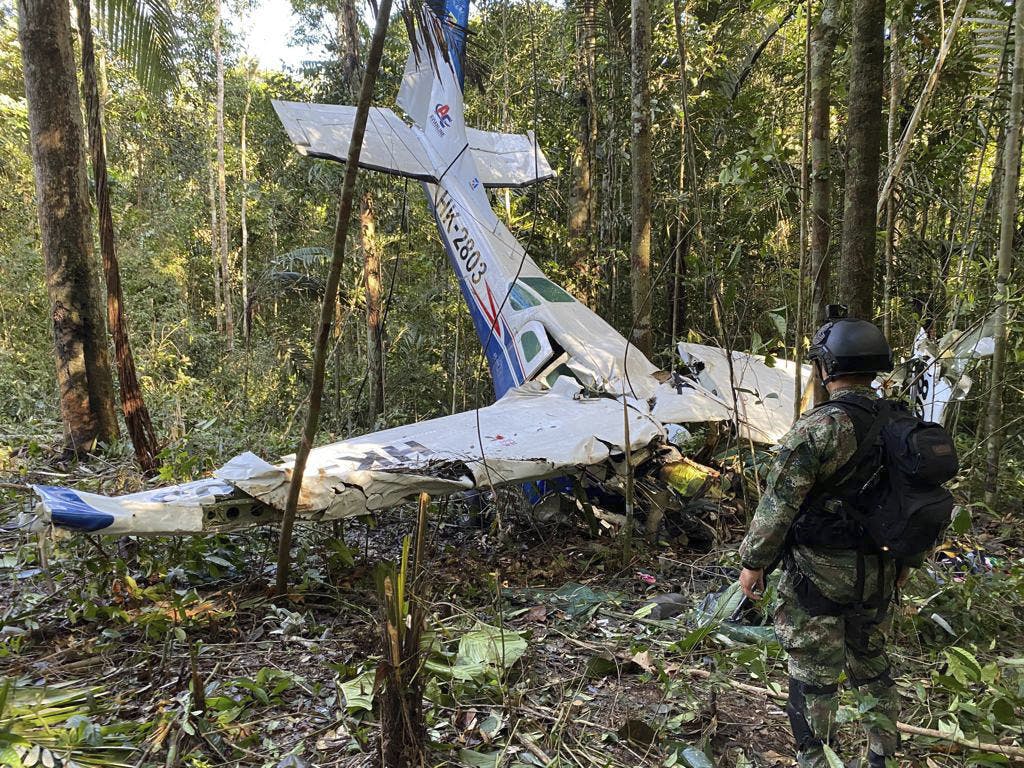Children Who Survived Jungle Plane Crash Put American Tots to Shame
Americans are left to wonder, how can children so young be so resourceful?

You may have heard that emergency workers recently rescued four siblings between the ages of 1 and 13 who had survived in the jungles of Colombia for 40 days after their plane crashed. After all the elation, much of the American public was left slightly confused:
How could children that young be that resourceful?
“My response is: They do this routinely,” says anthropologist David Lancy, author of “Child Helpers: A Multidisciplinary Perspective” and other books about children in other cultures. “They look after their brothers and sisters, including babies. They hunt. They forage. They build shelters.”
In short: They put us to shame.
The children — Lesly, 13; Soleiny, 9; Tien, 4; and Cristin, who had his first birthday during this ordeal — were traveling with their mother and uncle and a pilot on a small plane when its engine died. It crashed into one of the most remote regions of the Amazonian jungle on May 1.
Their mother survived for four days. After that, with all the adults dead, the children were on their own in a forest filled with poisonous plants, venomous snakes, ravenous jaguars, and about 16 hours of rain each day. That’s not to mention the drug traffickers and militias.
When searchers reached the plane 16 days after it crashed, they assumed all aboard had died, until one asked: Where are the bodies of the children?
When the team realized the children had survived, the Colombian government organized a massive search. It began with members of the military, but soon they were joined by 200 local Indigenous people. Normally, the two groups are mortal enemies. Yet on this mission, more than 300 people worked as a team.
The search was made insanely difficult by the density of the forest canopy, which lets in little light. The near-constant rain made it almost impossible to follow tracks or yell loudly enough for the children to hear. The searchers played tapes of the children’s grandmother telling the children that adults were looking for them. They also dropped 10,000 leaflets giving the children encouragement and advice.
It’s unclear whether they needed any.
By all accounts, 13-year-old Lesly took charge. She was raised by her grandmother in a remote village and learned to cook at age 8. When her parents were off working, she often took care of her siblings.
After the children ate a sack of cassava flour they salvaged from the plane, Lesly led them off to hunt and gather. They took with them some clothes, a tarp, mosquito netting, a flashlight, and a music box.
In the jungle, they collected water in a soda bottle and ate avichure — something like passion fruit — and milpesos — which supposedly taste like avocados. They hid in tree trunks to avoid predators. Lesley made shelters from branches held together with hair ties.
Searchers traversed more than 900 miles looking for the children, at one point passing within 200 feet of them. In the end, the children were found about four miles from the crash.
When children grow up in Indigenous cultures, far from modern anything, they learn the skills of life “by practice, observation, paying attention, listening, not being the center of attention, and being under an obligation from birth to help out and aspire to be like the adults,” says Mr. Lancy.
Meanwhile, in our country, we legally prevent children from developing that resourcefulness. Our authorities investigate and sometimes even arrest parents who let their children walk half a mile or spend six minutes alone in the library. You can help fight those laws by joining our advocacy efforts.
This wild overestimation of danger and underestimation of children goes so deep that the American Academy of Pediatricians put out a white paper a few years ago with this warning: “Young children have developmental limitations that prevent them from being safe pedestrians.”
Thanks to all those limitations, the AAP “recommends that children should not be unsupervised pedestrians before ten years of age, except in limited situations.”
I’m guessing those limited situations do not include 40 days unsupervised in the jungle.
Creators.com

